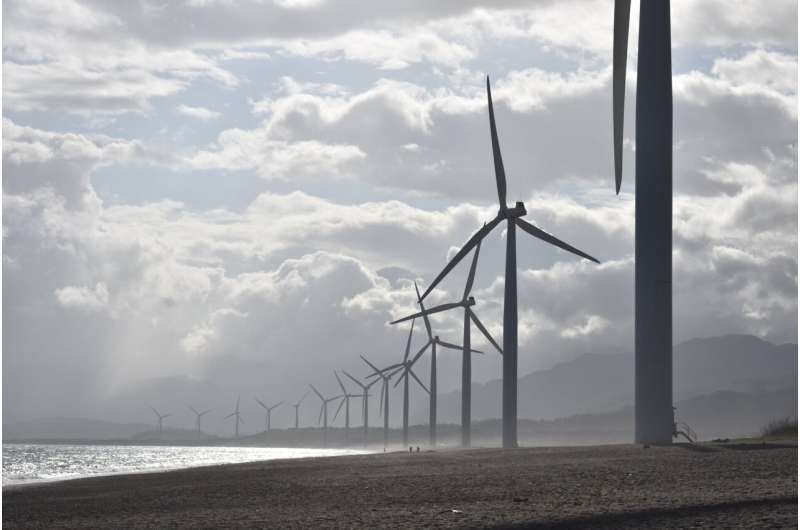This article has been reviewed according to Science X's editorial process and policies. Editors have highlighted the following attributes while ensuring the content's credibility:
fact-checked
proofread
Survey finds the farther away wind turbines are, the better they are accepted

A recent study based on a public participation survey shows that a long distance to wind farms increases positive attitudes towards them and wind power. Existing wind turbines are considered more acceptable than those under planning. Wind turbines are more acceptable close to a regular home than a vacation home which may present challenges in siting wind turbines especially in areas with more vacation homes.
The study is published in the Journal of Environmental Policy & Planning.
In Finland, wind power generation is expected to at least triple in the next few decades. While wind power can contribute to solving the long-term challenges of climate change and energy dependence, short-term consequences in people's everyday environment have an impact on the acceptability of wind power. The lack of acceptability may, in turn, slow down the establishment of new wind farms.
A study conducted by the Natural Resources Institute Finland (Luke) investigated the impact of the distance to wind turbines on the acceptability of wind power.
The research data was collected by conducting a public participation survey in the regions of Southwest Finland and Satakunta that are wind power hubs and have a relatively high population density on a Finnish scale. Wind turbines near the respondents' home or any vacation home and turbines under planning were taken into account.
Wind power more acceptable close to a regular home than a vacation home
Wind turbines were considered more acceptable near the permanent home than a vacation home which even took the researchers by surprise.
"It is probable that the results were affected by different lifestyles in these two locations. As people's everyday activities depend highly on technology and electricity generation in their permanent home, it is logical to accept solutions that maintain their technology-dependent lifestyle. For many, the ideal of a vacation home entails leading a simple life in nature and stepping away from their technology-dependent life," says Eija Pouta, Research Professor at Luke.
Vacation homes present challenges to municipalities: how can regular and vacation homes be addressed fairly in siting decisions? Should decisions be based on the opinions of permanent residents or vacation home owners who only spend a small part of the year in the area?
The farther, the better—concerns about impact on property in the background
"The survey results indicate that people do not want wind farm projects near them, regardless of whether they can see wind turbines on their daily routes. People are probably concerned about the impact of projects on the value of their property or their village community," Pouta says.
The acceptability of wind turbines is based on perceptions of their impact. When the geographic distance increases, the image of wind power as a clean energy source and the opportunities of future energy generation were emphasized in the respondents' attitudes.
Over shorter distances, attitudes focused more on concrete local impact. Negative perceptions included the impact of wind turbines on the recreational environment, the opportunities of agriculture and forestry, and the living conditions of animals. In contrast to the regular assumption, the landscape impact was also regarded as a positive factor.
Currently-operating wind turbines were found more acceptable than those still under planning. This means that people's attitudes become more positive when they become more accustomed to wind farms and the idea of having them around. After construction, the idea becomes more concrete and some perceived threats may disappear.
In Finland, the wind turbine density is still fairly low and distances to nearest wind turbines are relatively high compared to many other countries in the Baltic Sea region such as Germany and Denmark.
"So far, wind turbines can have been located in fairly distant and sparsely populated areas in Finland. This is also why there were only a few respondents who had their permanent or vacation home in the immediate vicinity of wind farms. The attitudes of people living close to wind turbines should also be measured in the future," Pouta says.
More information: Eija Pouta et al, Does multidimensional distance matter? Perceptions and acceptance of wind power, Journal of Environmental Policy & Planning (2023). DOI: 10.1080/1523908X.2023.2279053

















